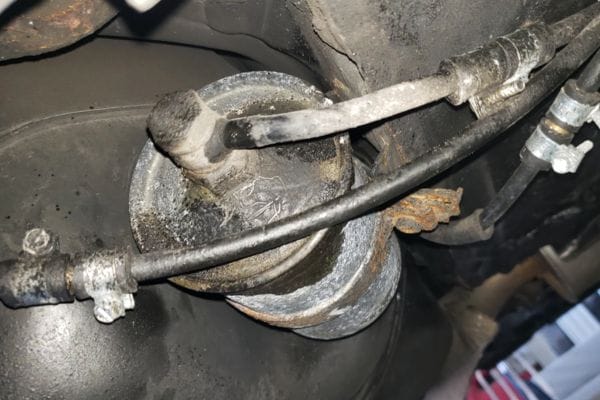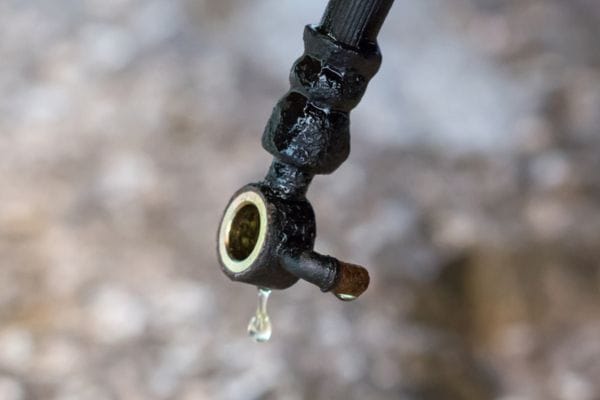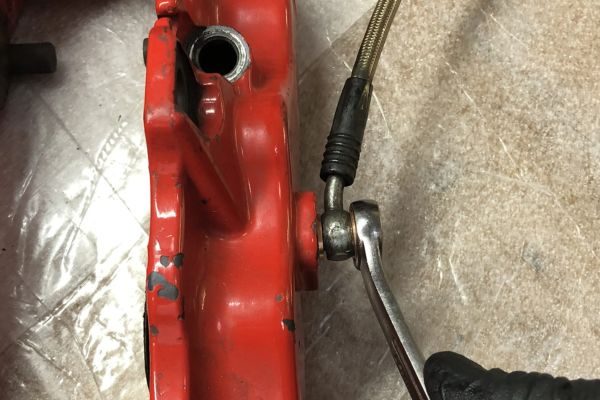Banjo bolts serve as essential connectors that ensure the seamless flow of fluids between different components. These bolts are commonly used in various applications, such as automotive brake lines, fuel systems, and industrial machinery, where reliable fluid transmission is vital for optimal performance. However, the occurrence of banjo bolt leaks can lead to significant issues, including decreased system efficiency, potential equipment damage, and safety hazards. Addressing these leaks promptly is essential to maintaining the integrity and functionality of hydraulic systems. This article aims to delve into the common causes behind banjo bolt leaks and provide practical, effective solutions to resolve these issues, ensuring the continued reliability and performance of your hydraulic systems.
Identifying a leaking banjo bolt early is crucial for maintaining the performance and safety of hydraulic systems. Here are some common signs to watch for that indicate a banjo bolt may be leaking:
Visible Fluid Leakage
One of the most apparent symptoms is the presence of fluid around the banjo bolt or surrounding areas. This could manifest as wet spots, drips, or puddles under the equipment. The fluid may be oil, brake fluid, or hydraulic fluid, depending on the system in which the banjo bolt is used.
Decreased System Performance
A leaking banjo bolt can lead to a drop in the overall efficiency of the hydraulic system. You may notice a reduction in pressure, sluggish operation, or inconsistent performance. In automotive applications, for example, this could translate to reduced braking power or erratic fuel delivery.
Unusual Noises or Vibrations
Leaks can cause air to enter the hydraulic system, leading to unusual noises such as hissing, whining, or knocking sounds. Additionally, vibrations or a rough operation might be felt due to the compromised integrity of the hydraulic system.

Identifying a leaking banjo bolt accurately is crucial for maintaining the performance and safety of hydraulic systems. Here are several methods to diagnose a banjo bolt leak effectively:
Initial Examination
Start by visually inspecting the banjo bolt and its immediate surroundings. Carefully examine the bolt, washers, and fittings for any signs of fluid leakage, which might appear as wet spots, drips, or puddles. Check for corrosion or damage on the bolt and washers, which can compromise the seal.
Detailed Check
Look for any cracks, deformations, or other physical damage on the bolt and washers. Corroded or damaged components should be replaced immediately to restore the integrity of the seal.
Monitor Levels
Regularly check the fluid levels in your hydraulic system. A steady drop in fluid levels without any apparent reason is a strong indicator of a leak.
Fluid Top-Up
If you frequently need to top up the fluid, there’s likely a leak somewhere in the system. This could be due to a faulty banjo bolt.
Conducting the Test
Perform a pressure test to identify drops in pressure within the hydraulic system. This involves using a pressure gauge to monitor the system’s pressure while it is operational.
Interpreting Results
A significant drop in pressure during the test indicates a leak. By observing where the pressure drops most noticeably, you can pinpoint the location of the leak, which may be at the banjo bolt.
Adding Fluorescent Dye
Add a fluorescent dye to the hydraulic fluid. This dye will mix with the fluid and help trace the leak.
Using UV Light
Use a UV light to scan the system. The fluorescent dye will glow under the UV light, highlighting the exact spot of the leak, and making it easier to locate and address.
Identifying Sounds
Pay close attention to any unusual sounds while the system is running. Hissing or whining noises often indicate air ingress due to a leak, which can occur at the banjo bolt.
Noise Source
Trace the source of the noise to identify the leak location. Unusual sounds usually point to the area where the fluid is escaping or where air is being sucked into the system.
System Operation
Run the system and feel for any abnormal vibrations or rough operations. Vibrations can be felt by placing your hand on the system components while it is running.
Locating the Issue
Abnormal vibrations or rough operation often signal issues related to a leaking banjo bolt. These can indicate that the fluid flow is being disrupted, likely due to a leak.
Banjo bolt leaks can disrupt the efficiency and safety of hydraulic systems. Understanding the common causes of these leaks is crucial for prevention and effective troubleshooting. Here, we delve into the primary reasons behind banjo bolt leaks:
Incorrect Torque Settings
Applying the correct torque is vital for the proper sealing of banjo bolts. Over-tightening can damage the bolt or crush the washers, while under-tightening can lead to insufficient sealing. Both scenarios result in leaks. It’s essential to follow manufacturer specifications for torque settings to ensure a secure and leak-free installation.
Misalignment of the Bolt and Fitting
Proper alignment between the banjo bolt and the fitting is crucial for preventing leaks. Misalignment can occur if the bolt is not seated correctly or if the connected parts are not properly aligned. This misalignment creates gaps that allow fluid to escape, compromising the integrity of the hydraulic system.

Types of Washers Used with Banjo Bolts
Banjo bolts typically use copper, aluminum, or composite washers to create a seal between the bolt and the fitting. Each type of washer has specific applications and benefits, but all can wear out over time due to pressure, heat, and fluid exposure.
Signs of Washer Wear or Damage
Visible signs of wear or damage include cracks, deformation, or flattening of the washers. Additionally, if the washers have been reused multiple times, they may no longer provide an effective seal, leading to leaks.
Materials and Manufacturing Defects
The quality of materials used in manufacturing banjo bolts plays a significant role in their performance. Low-grade materials can lead to defects such as cracks, brittleness, or improper threading, which can cause leaks. Manufacturing defects, including poor machining or incorrect dimensions, also contribute to sealing issues.
How to Identify a Substandard Banjo Bolt
Inspect the bolt for any visible defects such as irregular threading, rough surfaces, or signs of corrosion. Check for certifications or quality assurance marks from reputable manufacturers. Using bolts from trusted suppliers can minimize the risk of defects.
Impact of Dirt and Debris on Sealing Surfaces
Dirt, debris, and other contaminants can interfere with the sealing surfaces of banjo bolts and washers. These particles can create gaps and prevent the washers from forming a tight seal, leading to fluid leaks. Regular cleaning and maintenance of the hydraulic system can help prevent contamination.
Effects of Corrosion on Banjo Bolts
Corrosion is a common issue, especially in environments exposed to moisture and chemicals. Corroded banjo bolts can develop pits and cracks, compromising their structural integrity and sealing ability. It’s important to use corrosion-resistant materials and regularly inspect and replace corroded components to maintain a leak-free system.
Properly addressing a leaking banjo bolt is essential to maintaining the efficiency and safety of your hydraulic system. Here’s a detailed guide on how to fix a leaking banjo bolt: chemicals. Corroded banjo bolts can develop pits and cracks, compromising their structural integrity and sealing ability. It’s important to use corrosion-resistant materials and regularly inspect and replace corroded components to maintain a leak-free system.
Safety Precautions and Necessary Tools
Before starting any repair, ensure the system is powered off and depressurized to avoid any accidents. Wear appropriate personal protective equipment (PPE) such as gloves and safety glasses.
Gather the necessary tools, including wrenches, torque wrenches, replacement washers and seals, cleaning cloths, and a UV light if using dye.
How to Access and Inspect the Banjo Bolt
Locate the banjo bolt within your hydraulic system. This may require removing surrounding components or covers.
Inspect the banjo bolt and the immediate area for signs of fluid leakage, corrosion, or damage. Check the washers and seals for wear or deformation.
Types of Replacement Washers and Seals
Use high-quality replacement washers and seals that are compatible with your system. Common types include copper, aluminum, or composite washers.
Step-by-Step Replacement Process
Remove the Banjo Bolt:
Use a wrench to carefully remove the banjo bolt from its fitting.
Remove Old Washers:
Take out the old washers and seals from the bolt and fitting.
Clean the Area:
Clean the banjo bolt and the fitting surfaces with a cloth to remove any debris or residue.
Install New Washers:
Place the new washers and seals onto the banjo bolt, ensuring they are seated properly.
Reinstall the Banjo Bolt:
Carefully thread the banjo bolt back into its fitting, making sure not to cross-thread.
Proper Torque Settings for Various Applications
Refer to the manufacturer’s specifications for the correct torque settings for your specific application. Over-tightening or under-tightening can lead to leaks or damage.
Techniques for Ensuring Correct Alignment
Ensure the bolt and fitting are properly aligned before tightening. This can be done by hand-threading the bolt initially and then using a torque wrench to apply the correct torque evenly.
Addressing Damaged Components
Identifying and Replacing Damaged Bolts or Fittings
Inspect the banjo bolt and fittings for any signs of damage such as cracks, deformities, or significant wear. Replace any components that show signs of damage.
When to Seek Professional Help
If the leak persists after replacing washers and retorquing, or if you notice extensive damage to the hydraulic system components, it may be necessary to seek professional assistance. Professional technicians have the tools and expertise to address more complex issues and ensure the system operates correctly.
Preventing banjo bolt leakage is crucial for maintaining the reliability and efficiency of hydraulic systems. Here are some comprehensive measures to ensure a leak-free operation:

Correct Torque Application
Use a torque wrench to apply the manufacturer’s specified torque settings. Over-tightening can damage the washers and bolts, while under-tightening can lead to insufficient sealing.
Ensuring Proper Alignment
Ensure the banjo bolt and fitting are correctly aligned before tightening. Misalignment can create gaps that allow fluid to escape. Hand-thread the bolt initially to ensure it is properly seated.
Scheduled Inspections
Conduct regular inspections of the hydraulic system, including the banjo bolts, to identify signs of wear, damage, or leaks. Early detection can prevent minor issues from becoming major problems.
Cleaning and Lubrication
Keep the banjo bolts and surrounding areas clean and free of debris. Lubricate the threads and sealing surfaces as recommended by the manufacturer to prevent corrosion and ensure a tight seal.
Choosing the Right Materials
Use high-quality banjo bolts, washers, and seals made from durable materials such as stainless steel or brass, which are resistant to corrosion and wear.
Certified Products
Purchase components from reputable suppliers who provide certified products that meet industry standards. This ensures reliability and performance.
Timely Replacement
Replace washers and seals regularly, especially if they show signs of wear, flattening, or deformation. Regular replacement ensures that the sealing surfaces remain effective.
Using the Correct Type
Select the appropriate type of washers and seals for your specific application. Copper, aluminum, and composite washers each have unique properties suited for different environments and pressures.
System Cleanliness
Maintain cleanliness within the hydraulic system. Dirt, debris, and other contaminants can interfere with the sealing surfaces and cause leaks.
Corrosion Prevention
Use corrosion-resistant materials and apply protective coatings where necessary. Regularly inspect and clean components to prevent corrosion from compromising the integrity of the banjo bolt and fittings.
Educating Technicians
Ensure that all technicians and personnel handling the hydraulic system are well-trained in proper installation and maintenance procedures. Awareness and knowledge significantly reduce the risk of improper handling and subsequent leaks.
Regular Monitoring
Continuously monitor the performance of the hydraulic system. Sudden drops in pressure, unusual noises, or changes in operation can be early indicators of potential leaks.
Diagnostic Tools
Use diagnostic tools such as pressure gauges and leak detection dyes to regularly check for leaks and ensure the system is operating within the specified parameters.
In summary, addressing banjo bolt leaks promptly is crucial for maintaining the efficiency and safety of hydraulic systems. We’ve discussed common causes of leaks, such as improper installation, worn washers, and poor-quality components, and provided detailed steps for diagnosing and fixing these issues. By following best practices for installation, regular maintenance, and using high-quality parts, you can prevent leaks and ensure your hydraulic systems operate smoothly. Always prioritize proper alignment, correct torque settings, and routine inspections to maintain a leak-free and reliable system.
It’s recommended to inspect your banjo bolts during regular maintenance checks, at least every three to six months, depending on the intensity of system use and the working environment.
No, it’s best to use new washers every time you replace a banjo bolt to ensure a proper seal and prevent potential leaks.
The torque setting varies by application and manufacturer. Always refer to the manufacturer’s specifications for the correct torque setting to avoid over-tightening or under-tightening.
Signs of a failing banjo bolt include visible fluid leakage, reduced system performance, unusual noises, and vibrations. Regular inspections can help catch these signs early.
The type of washer depends on the application. Common options include copper, aluminum, and composite washers. Copper washers are widely used due to their good sealing properties and durability.
If the leak persists after replacing washers and retorquing the bolt, or if you notice extensive damage to the bolt or fittings, it’s advisable to seek professional assistance to ensure the problem is correctly addressed.